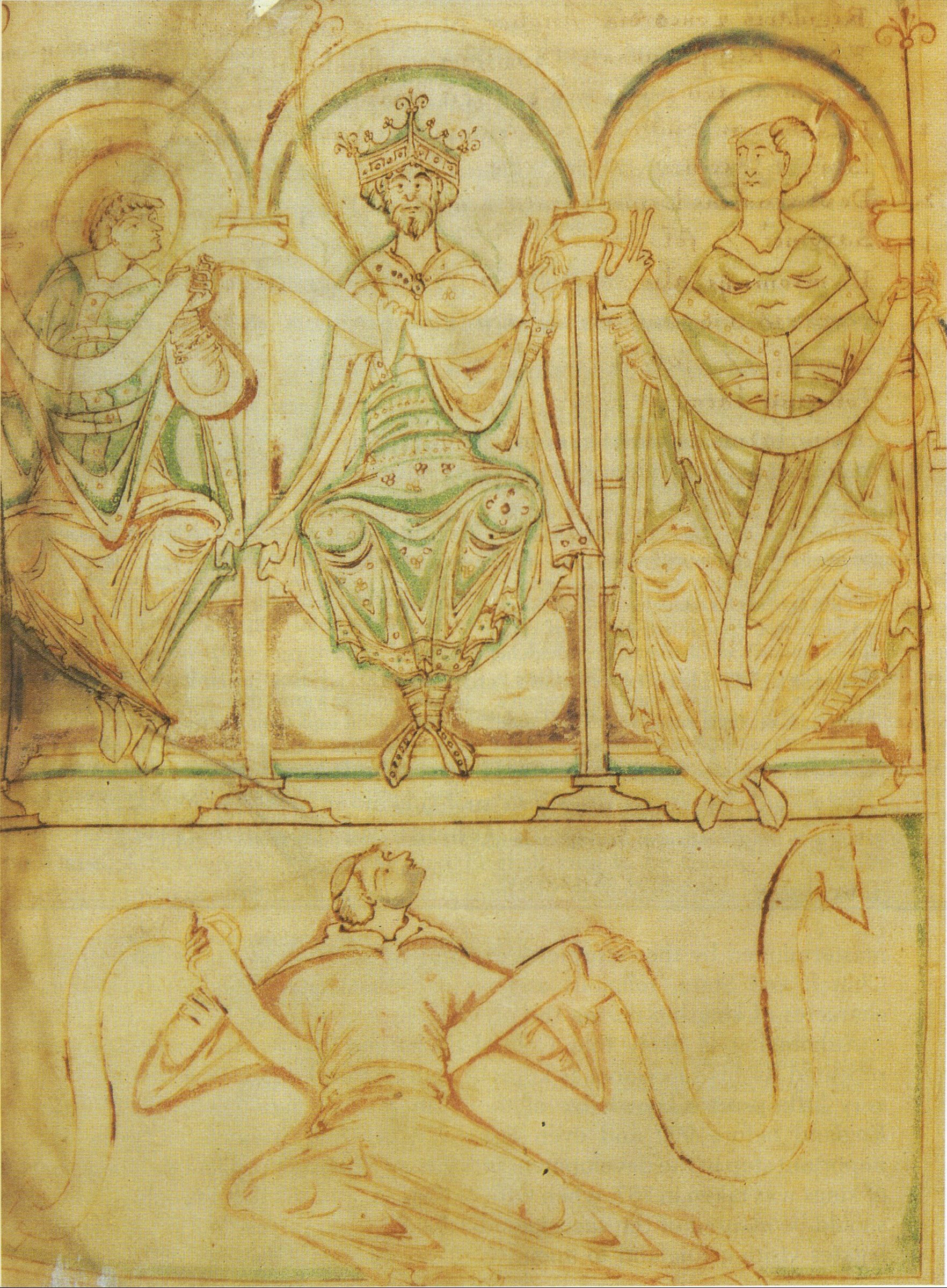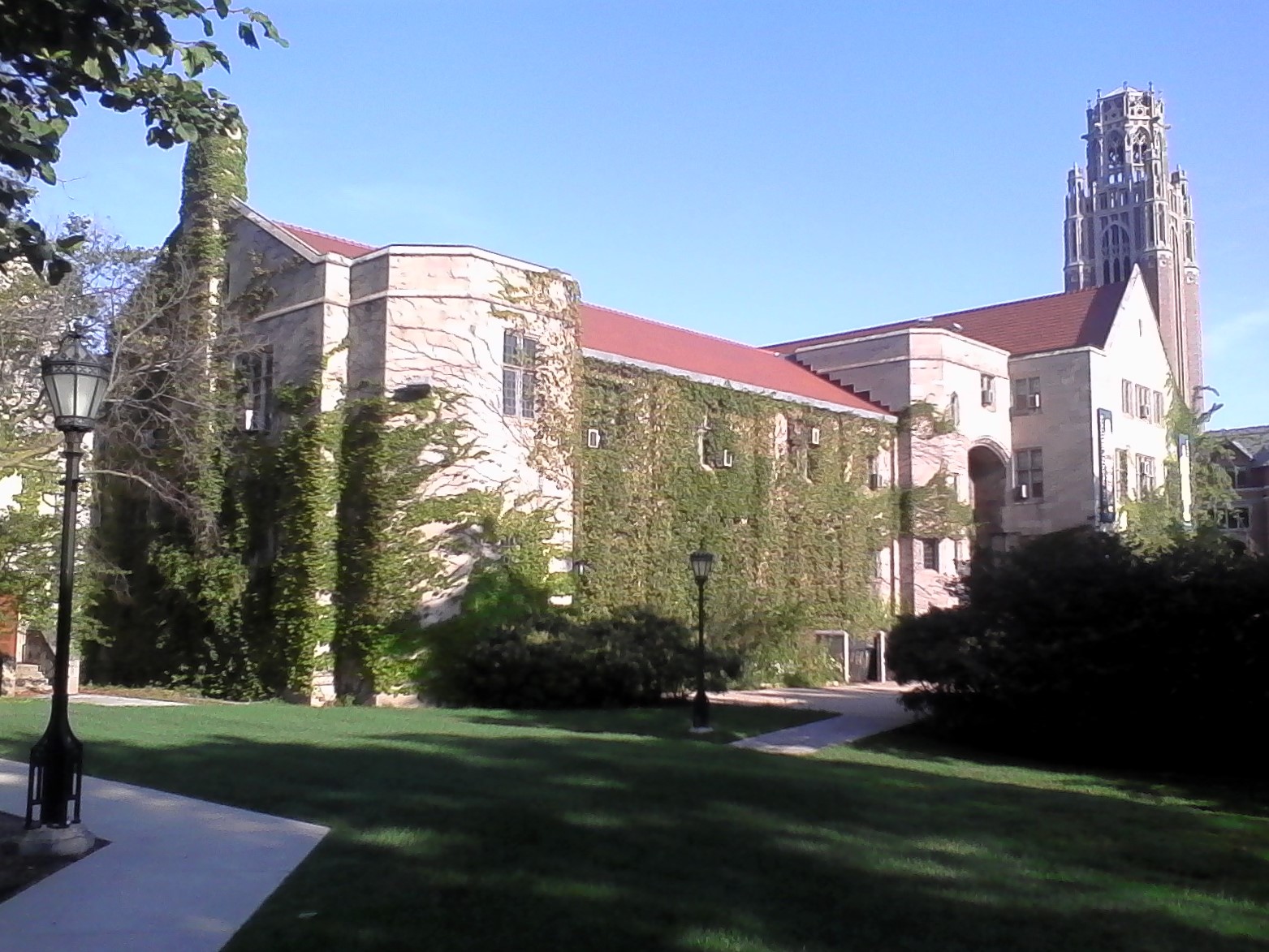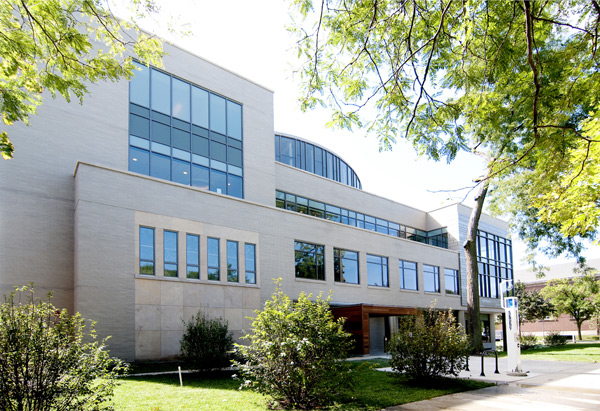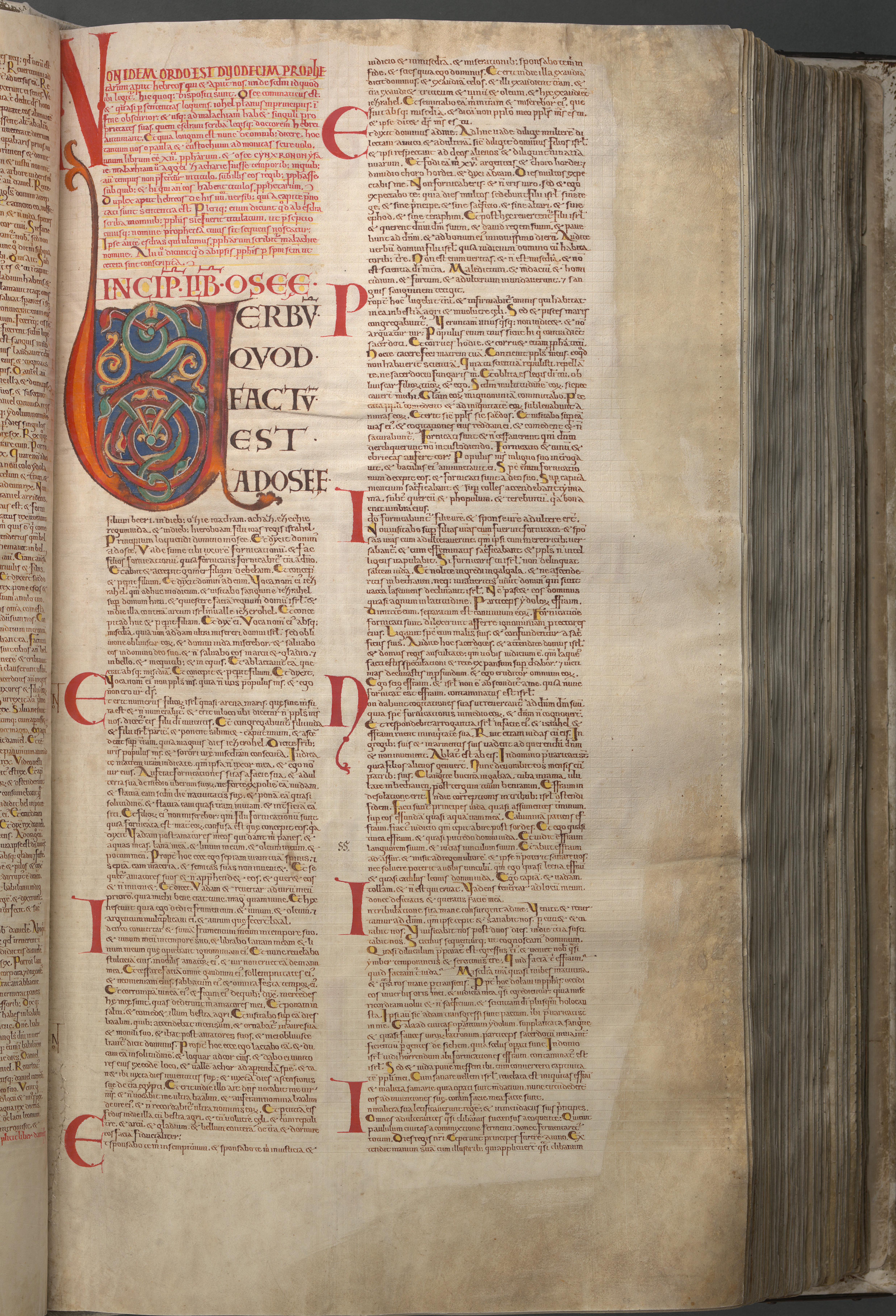|
John M. P. Smith
John Merlin Powis Smith (28 December 1866 – November 1932) was an English-born, American orientalist and biblical scholar. Smith was born in London, son of William Martin and Anne Powis Smith. He was orphaned at age five and thereafter raised by his aunt in Herefordshire and Devonshire. After finishing school, Smith passed an examination for entrance to Cambridge, but was unable to secure funding for his studies and migrated to America in 1883. Having migrated to America, Smith lived on the farm of an uncle in Denison, Iowa. In 1890 he became a Baptist. While attending college in Iowa, Smith also taught introductory Greek, and after earning his Bachelor of Arts degree in 1893, taught Greek at Cedar Valley Seminary in Osage, Iowa. He enrolled as a graduate student at the University of Chicago in 1894. During his time at the Divinity School he studied Hebrew, Biblical Aramaic, Syriac, Arabic, Akkadian and Sumerian. Smith completed his doctoral dissertation on "The ... [...More Info...] [...Related Items...] OR: [Wikipedia] [Google] [Baidu] |
London
London is the capital and largest city of England and the United Kingdom, with a population of just under 9 million. It stands on the River Thames in south-east England at the head of a estuary down to the North Sea, and has been a major settlement for two millennia. The City of London, its ancient core and financial centre, was founded by the Romans as '' Londinium'' and retains its medieval boundaries.See also: Independent city § National capitals The City of Westminster, to the west of the City of London, has for centuries hosted the national government and parliament. Since the 19th century, the name "London" has also referred to the metropolis around this core, historically split between the counties of Middlesex, Essex, Surrey, Kent, and Hertfordshire, which largely comprises Greater London, governed by the Greater London Authority.The Greater London Authority consists of the Mayor of London and the London Assembly. The London Mayor is distinguished fr ... [...More Info...] [...Related Items...] OR: [Wikipedia] [Google] [Baidu] |
Biblical Aramaic
Biblical Aramaic is the form of Aramaic that is used in the books of Daniel and Ezra in the Hebrew Bible. It should not be confused with the Targums – Aramaic paraphrases, explanations and expansions of the Hebrew scriptures. History During the Babylonian captivity of the Jews, which began around 600 BCE, the language spoken by the Jews started to change from Hebrew to Aramaic, and Aramaic square script replaced the Paleo-Hebrew alphabet. After the Achaemenid Empire annexed the Neo-Babylonian Empire in 539 BCE, Aramaic became the main language of public life and administration. Darius the Great declared Imperial Aramaic to be the official language of the western half of his empire in 500 BCE, and it is that Imperial Aramaic that forms the basis of Biblical Aramaic. Biblical Hebrew was gradually reduced to the status of a liturgical language and a language of theological learning, and the Jews of the Second Temple period that started in 516 BCE would have spoken a west ... [...More Info...] [...Related Items...] OR: [Wikipedia] [Google] [Baidu] |
Edgar J
Edgar is a commonly used English given name, from an Anglo-Saxon name ''Eadgar'' (composed of '' ead'' "rich, prosperous" and ''gar'' "spear"). Like most Anglo-Saxon names, it fell out of use by the later medieval period; it was, however, revived in the 18th century, and was popularised by its use for a character in Sir Walter Scott's ''The Bride of Lammermoor'' (1819). People with the given name * Edgar the Peaceful (942–975), king of England * Edgar the Ætheling (c. 1051 – c. 1126), last member of the Anglo-Saxon royal house of England * Edgar of Scotland (1074–1107), king of Scotland * Edgar Angara, Filipino lawyer * Edgar Barrier, American actor * Edgar Baumann, Paraguayan javelin thrower * Edgar Bergen, American actor, radio performer, ventriloquist * Edgar Berlanga, American boxer * Edgar H. Brown, American mathematician * Edgar Buchanan, American actor * Edgar Rice Burroughs, American author, creator of ''Tarzan'' * Edgar Cantero, Spanish author in Catalan, Spa ... [...More Info...] [...Related Items...] OR: [Wikipedia] [Google] [Baidu] |
Albright Institute Of Archaeological Research
The W. F. Albright Institute of Archaeological Research (AIAR) is an archaeological research institution located in East Jerusalem. It is the oldest American research center for ancient Near Eastern studies in the Middle East. Founded in 1900 as the ''American School of Oriental Research'', it was renamed in 1970 after its most distinguished director and the father of biblical archaeology, William F. Albright. Its mission is to develop and disseminate scholarly knowledge of the literature, history, and culture of the Near East, as well as the study of civilization from pre-history to the early Islamic period. Today, the Albright Institute is one of three separately incorporated institutes affiliated with the American Schools of Oriental Research (ASOR), the others being the American Center of Oriental Research – ACOR in Amman, Jordan, and the Cyprus American Archaeological Research Institute – CAARI – in Nicosia, Cyprus. In 1948, the then American School of Oriental Research, ... [...More Info...] [...Related Items...] OR: [Wikipedia] [Google] [Baidu] |
University Of Chicago Oriental Institute
The Oriental Institute (OI), established in 1919, is the University of Chicago's interdisciplinary research center for ancient Near Eastern ("Orient") studies and archaeology museum. It was founded for the university by professor James Henry Breasted with funds donated by John D. Rockefeller, Jr. It conducts research on ancient civilizations throughout the Near East, including at its facility, Chicago House, in Luxor, Egypt. The institute publicly exhibits an extensive collection of artifacts related to ancient civilizations at its on-campus building in Hyde Park, Chicago. According to anthropologist William Parkinson of the Field Museum, the OI's highly focused "near Eastern, or southwest Asian and Egyptian" collection is one of the finest in the world. History In the early 20th century, James Henry Breasted built up the collection of the university's Haskell Oriental Museum, which he oversaw along with his field work, and teaching duties. He dreamed, however, of establishi ... [...More Info...] [...Related Items...] OR: [Wikipedia] [Google] [Baidu] |
James Henry Breasted
James Henry Breasted (; August 27, 1865 – December 2, 1935) was an American archaeologist, Egyptologist, and historian. After completing his PhD at the University of Berlin in 1894, he joined the faculty of the University of Chicago. In 1901 he became director of the Haskell Oriental Museum at the university, where he continued to concentrate on Egypt. In 1905 Breasted was promoted to full professor, and held the first chair in Egyptology and Oriental History in the United States. In 1919 he founded the Oriental Institute at the University of Chicago, a center for interdisciplinary study of ancient civilizations. Breasted was a committed field researcher, and had a productive interest in recording and interpreting ancient writings, especially from sources and structures that he feared may be lost forever. Early life and education James Henry Breasted was born on August 27, 1865, the son of a small hardware business owner and his wife, in Rockford, Illinois. His ancestors went ... [...More Info...] [...Related Items...] OR: [Wikipedia] [Google] [Baidu] |
Meadville Lombard Theological School
The Meadville Lombard Theological School is a Unitarian Universalism, Unitarian Universalist seminary in Chicago, Illinois. History Meadville Lombard is a result of a merger in the 1930s between two institutions, a American Unitarian Association, Unitarian seminary and a Universalist Church of America, Universalist seminary. Meadville Theological School was founded in 1844 in Meadville, Pennsylvania, Meadville, Pennsylvania. Most of the original funding came from Harm Jan Huidekoper, a recent convert to Christian Unitarianism and a wealthy businessman, and from the Independent Congregational Church. ''Note:'' This includes Meadville Theological School moved to Chicago and became affiliated with the University of Chicago in 1926. It began construction on its permanent building in 1929, located across the street from First Unitarian Church of Chicago and designed by the same architect. Lombard College was a Universalist institution in Galesburg, Illinois, founded in 1853. Fro ... [...More Info...] [...Related Items...] OR: [Wikipedia] [Google] [Baidu] |
Chicago Theological Seminary
Founded in 1855, the Chicago Theological Seminary (CTS) is the oldest higher education institution in the City of Chicago and was established with two principal goals: first, to educate pastors who would minister to people living on the new western frontier of the United States and second, to train ministers who would advance the movement to abolish slavery. Originally started under the direction of the abolitionist Stephen Peet and the Congregational Church (now the United Church of Christ) by charter of the Illinois legislature, CTS has retained its forward-looking activist outlook throughout its history, graduating alumni who include civil rights activists Jesse Jackson Sr. and Howard Schomer, social reformer Graham Taylor, and anti-Apartheid activist John W. de Gruchy. It is one of six seminaries affiliated with the United Church of Christ and follows an ecumenical tradition that stresses cooperation between different Christian denominations as well as interfaith understa ... [...More Info...] [...Related Items...] OR: [Wikipedia] [Google] [Baidu] |
Twelve Minor Prophets
The Minor Prophets or Twelve Prophets ( he, שנים עשר, ''Shneim Asar''; arc, תרי עשר, ''Trei Asar'', "Twelve") ( grc, δωδεκαπρόφητον, "the Twelve Prophets"), occasionally Book of the Twelve, is a collection of prophetic books, written between about the 8th and 4th centuries BC, which are in both the Jewish Tanakh and Christian Old Testament. In the Tanakh, they appear as a single book, (''"The Twelve"''), which is the last book of the Nevi'im, the second of three major divisions of the Tanakh. In the Christian Old Testament, the collection appears as twelve individual books, one for each of the prophets: the Book of Hosea, Joel, Amos, Obadiah, Jonah, Micah, Nahum, Habakkuk, Zephaniah, Haggai, Zechariah, and Malachi. Their order, and position in the Old Testament, varies slightly between the Protestant, Catholic and Eastern Orthodox Bibles. The name "Minor Prophets" goes back apparently to St. Augustine, who distinguished the 12 shorter prophetic bo ... [...More Info...] [...Related Items...] OR: [Wikipedia] [Google] [Baidu] |
International Critical Commentary
The International Critical Commentary (or ICC) is a series of commentaries in English on the text of the Old Testament and New Testament. It is currently published by T&T Clark, now an imprint of Bloomsbury Publishing. Initially started over one hundred years ago, the International Critical Commentary series has been a highly regarded academic-level commentary on the Bible. It aims to marshall all available aids to exegesis: linguistic, textual, archaeological, historical, literary and theological. No unifying scheme is sought but each scholar has been free to express their expertise. Originally edited by Samuel Rolles Driver, Alfred A. Plummer and Charles Augustus Briggs (whom the Presbyterian Church in the USA excommunicated for heretical views on Scripture), the series has been in the hands of various editors since. The current editors are Graham I. Davies and Christopher M. Tuckett. Volumes * 552 pages * 489 pages * 434 pages * 476 pages * 421 pages * 574 pages * 534 ... [...More Info...] [...Related Items...] OR: [Wikipedia] [Google] [Baidu] |
William Rainey Harper
William Rainey Harper (July 24, 1856 – January 10, 1906) was an American academic leader, an accomplished semiticist, and Baptist clergyman. Harper helped to establish both the University of Chicago and Bradley University and served as the first president of both institutions. Early life Harper was born on July 24, 1856, in New Concord, Ohio,The original log cabin that was William Rainey Harper’s birthplace has been preserved and is located in New Concord, Ohio, across from the main gate of Muskingum College. to parents of Irish-Scottish ancestry. Very early in his life, Harper displayed skills years ahead of other children of his age, and he was labeled a child prodigy. By the age of eight, Harper began preparing for college-level courses. At the age of ten he enrolled in Muskingum College in his native New Concord, Ohio. At the age of fourteen, he graduated from Muskingum College. In 1872, Harper enrolled in Yale University to begin his postgraduate studies, and he comple ... [...More Info...] [...Related Items...] OR: [Wikipedia] [Google] [Baidu] |
Sumerian Language
Sumerian is the language of ancient Sumer. It is one of the oldest attested languages, dating back to at least 3000 BC. It is accepted to be a local language isolate and to have been spoken in ancient Mesopotamia, in the area that is modern-day Iraq. Akkadian, a Semitic language, gradually replaced Sumerian as a spoken language in the area around 2000 BC (the exact date is debated), but Sumerian continued to be used as a sacred, ceremonial, literary and scientific language in Akkadian-speaking Mesopotamian states such as Assyria and Babylonia until the 1st century AD. Thereafter it seems to have fallen into obscurity until the 19th century, when Assyriologists began deciphering the cuneiform inscriptions and excavated tablets that had been left by its speakers. Stages The history of written Sumerian can be divided into several periods: *Archaic Sumerian – 31st–26th century BC *Old or Classical Sumerian – 26th–23rd century BC *Neo-Sumerian – 23rd–21s ... [...More Info...] [...Related Items...] OR: [Wikipedia] [Google] [Baidu] |







